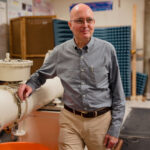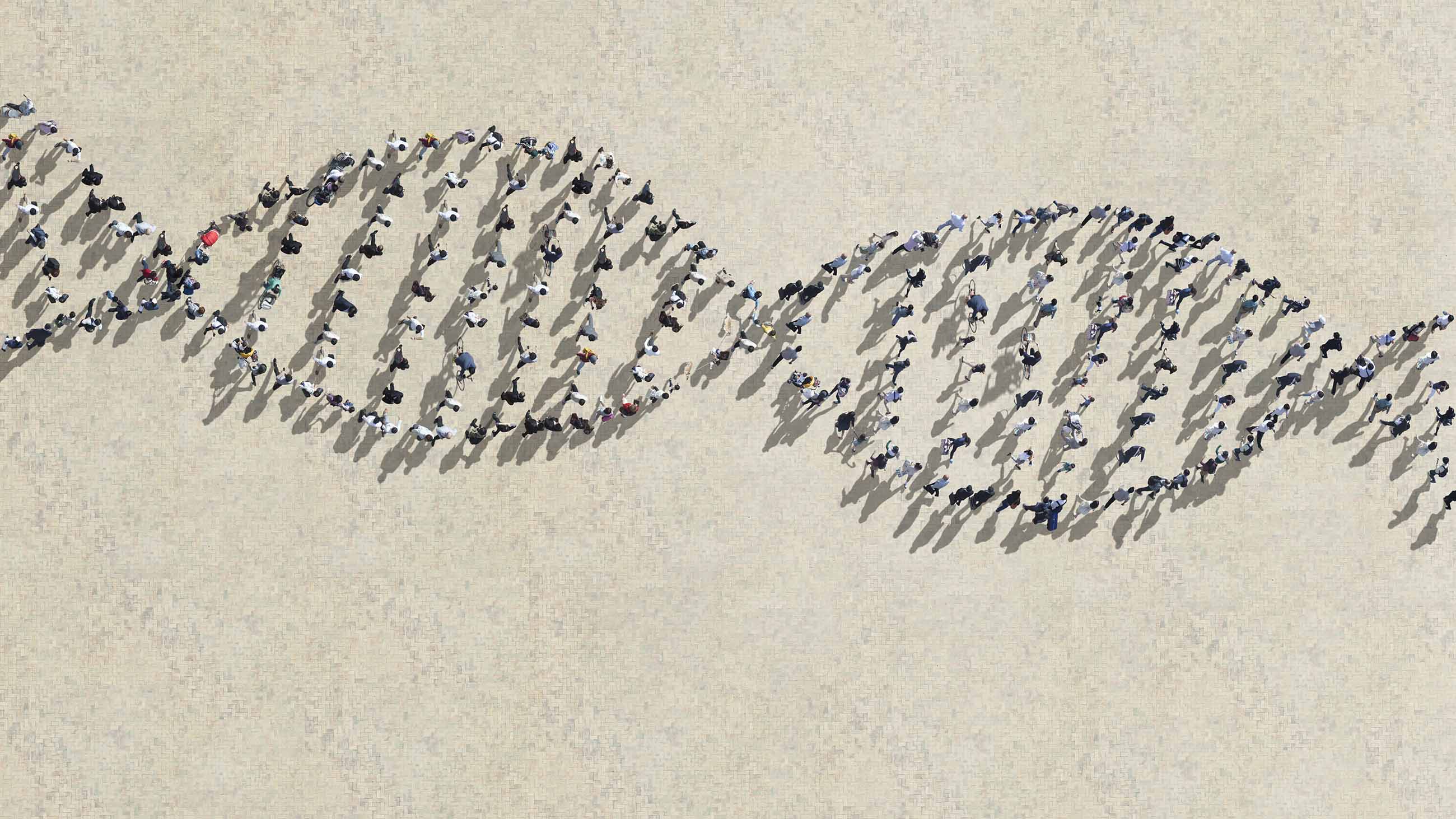In the Age of Trump, Open Science Is Crucial
TToday, online tools make practicing open science — sharing every lab note, bit of code, and statistical script with interested observers in real time — easier than ever. Even so, many scientists are hesitant, for fear that their research will be scooped, allowing another group to “steal” their work and get all the glory. Such zero-sum thinking reflects the intensely competitive reality of scientific research funding, in which large grants and career advancement depend upon being the first to make a bold new claim. It also runs counter to the communitarian ideal of science.

For two decades now, this state of affairs, in which scientists close ranks around their data rather than sharing it freely online, has been tolerable if far from optimal. After all, this is the way it has always been, and journal articles do provide for some degree of information sharing. And at least those articles that are “open access” are available to everyone and not only subscribers.
Scientific publishing practices remain amazingly conservative in the internet age, because publishing a static PDF “paper” is often all that matters for career advancement. But science marches on.
Now, times have changed. Given the current political environment in the United States and much of the world, practicing open science is no longer just an option. Faced with a president who has called climate change a hoax and outlined plans for massive cuts to the EPA, NIH, and other agencies, researchers must feel a renewed call to action to defend the value of empiricism, enhance public understanding of the value of science, and enable one another to explore questions that require open access to data.
The epistemological underpinning of open science is simple: Providing people with a window into the process of science — all of the fits, starts, dead ends, and “Aha” moments that make up any research project — serves as a valuable learning tool in its own right. This is true for anyone, from specialists with deep expertise in a scientific domain to members of the public curious about how science works.
Scientific journal articles, then, are inherently reductive, focusing on the outcome of a study and not much on the process that led to it. The work of science lies in what is not fully recorded in journal articles: the adjustments of conclusions and assertions based on the actual evidence at hand. This is the essence of empiricism, which involves drawing conclusions from data and experimentation rather than bluster and blunt assertion. Even if scientists often fall short of this ideal, given their human foibles and the pressure to publish dramatic findings, the goal of the disinterested pursuit of knowledge remains worth pursuing.
President Trump has made wild claims about climate change, despite reams of empirical evidence proving him wrong. He has also flirted with the false notion that vaccines cause autism in children. These assertions, in their brazen shamelessness, are a direct assault on the idea of carefully gathering data and drawing measured conclusions. As such they are an attack on empiricism itself.
In this context, practicing open science achieves two salutary purposes: defusing conspiracy theories about the aims of scientists by showing they have nothing to hide, and serving as a continuous defense of the virtues of empiricism.
But defending empiricism by practicing open science could amount to nothing more than a tweedy parlor game. Imagine a group of scientists discussing each other’s newly available data sets in low tones, with NPR burbling in the background and guests playing croquet on the lawn. Pleasant, yet pointless.
To have political impact, practicing open science must be accompanied by a willingness to discuss what it means with audiences of various scientific backgrounds. Trump’s attack on empiricism depends upon the longstanding GOP boogeyman of the arrogant scientist, eager to waste taxpayer dollars while researching pointless things. This caricature has potency because scientists, like members of any profession, tend to talk among themselves. Such insularity is a luxury they can no longer afford. Even if Trump’s draconian cuts for scientific research are walked back, as seems likely, this is a clear warning sign of what to expect in the future. Building a greater base of support for the value of science, among engaged taxpayers, is one way to stem the tide.

WWhat does this mean in real life? The answer is multifaceted, as could be seen in a recent Facebook Live session about science engagement sponsored by the American Association for the Advancement of Science. Melissa Kenney of the University of Maryland recommended TED Talks and public radio’s “Science Friday” as models for how to tell science stories in a compelling way. For those worried that such popularizing bastardizes true science, it’s time to get over it.
Several panelists in that session noted that #sciengage on Twitter supports a burgeoning community of scientists, who are working to achieve better understanding of why science matters. In some cases, scientists themselves are equipped to tell these stories. In others, science journalists can help to close the gap. All around, it’s crucial that these interactions with members of the public are conversations and not monologues — writing an article or standing on a stage to proclaim “here’s what I do and here’s why it matters” will not suffice. Scientists need to be receptive to learning what members of their local communities want to learn more about, and patient when they encounter misunderstandings about basic scientific facts.
Meanwhile, an open record of ongoing research should be available for anyone — prospective research partners, politicians, taxpayers — to consult. The primary audience for this work would be other scientists who possess the relevant training to build upon it. Even if members of the public never open or download a single data set, transparency is its own advertisement. Surely some politicians will cherry-pick through open data to make a spurious claim that science really is useless. But these sorts of people already make these sorts of claims, so we don’t have anything to lose.
Perhaps the idea that a broad swath of the public will suddenly become interested in science is preposterous. Many people don’t even vote and could not tell you the names of their congressional representatives. And besides that, scoops are real. Practicing open science is too risky, even if it sounds good in theory.
To these objections, there is a very straightforward defense of open science: It enables scientists to solve problems that would be impossible to address in any other way. Our understanding of the basic constituents of chemistry, physics, and human health is quite robust by now. The challenges remaining are complex and ethically fraught. For example, the biochemist Kevin Esvelt is an expert on the potentially world-changing technique of gene editing. Using tools like CRISPR, scientists can edit individual genes to propagate certain outcomes over time. This “gene drive” technique could be used for great good, to wipe out malaria, or for great evil, to spread race-based eugenics. Ethical use of gene editing technology requires the opportunity for community members to provide frank input about their hopes and fears. To that end, Esvelt argues, everyone needs access to the complete record of gene drive research.
The Alzheimer’s Disease Neuroimaging Initiative offers one existing model for practicing open science. This is a longstanding consortium of federally funded neuroscientists and pharmaceutical company scientists, collaborating to identify the biomarkers of Alzheimer’s. The results would benefit many groups, from basic scientists to those who develop commercial applications that build on this foundation. Even so, the investment is too great for any one group in the consortium to bear alone. If left to ADNI’s constituent partners to fund this work, it never would have happened. A crucial guideline for ADNI is that all resulting data is publicly shared, with the project partners and with everyone else.
In that way, open science garners increased attention for those who practice it, which leads to more job opportunities and more funding. Such accolades have long been among the metrics by which scientists are measured. Far from leading to career-damaging scoops, it appears that practicing open science can be a boon.
For many reasons, then, open science has met its moment. The time is now.
Marcus Banks is a journalist with many years of experience as a health sciences librarian. Among other outlets his work has appeared in the San Francisco Chronicle, Nieman Storyboard and American Libraries.











Comments are automatically closed one year after article publication. Archived comments are below.
Do you think basic income could play a role in this? Many scientists of centuries long-past were often quite wealthy and could focus on whatever research they wanted to without pressure to publish. Perhaps this basic income would be awarded if one simply shows a consistent and diligent attitude to data gathering and analysis. Anyway, my understanding of economics and sociology isn’t very good.